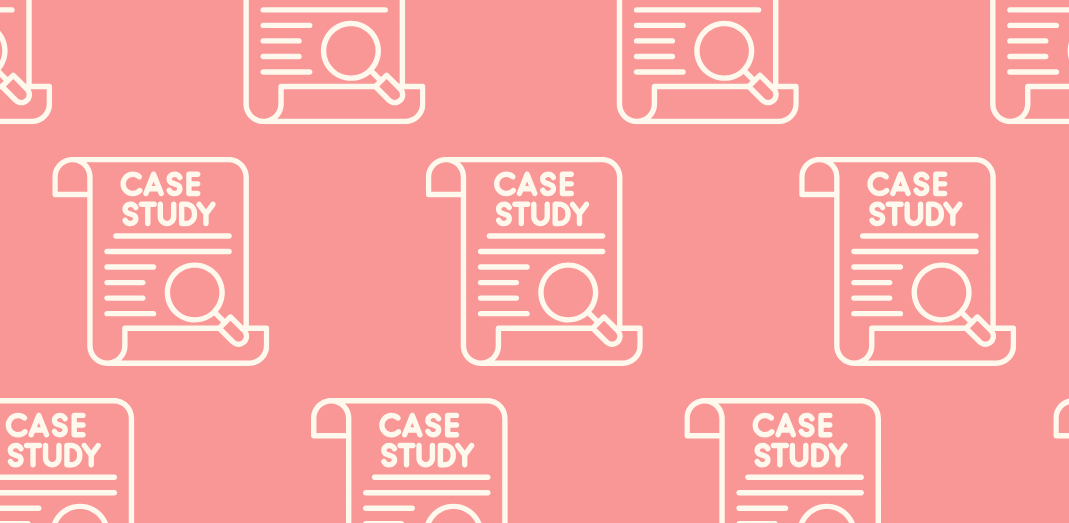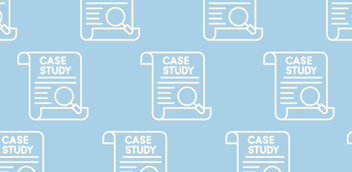In this second part of our 3-part series on Case Studies, we're focused on practical execution.
Missed Part 1? Read it here.
Best Practices for Interviewing Case Study Candidates
A well-conducted interview uncovers the specific details, emotions, and outcomes that transform a basic success story into compelling proof of value. Here's how to get the most out of these crucial conversations.
Pre-Interview Preparation
Before scheduling the interview, do your homework. Review the customer's account history, support tickets, usage data, and any previous conversations about their experience. This preparation allows you to ask more targeted questions and demonstrates that you value their time.
Create a discussion guide that covers your key topics but remains flexible enough to follow interesting tangents. The best case study insights often come from unexpected directions, so be prepared to explore topics that emerge naturally during the conversation.
Set the Right Tone
Start by explaining how the case study will be used and what's in it for them. Many customers are motivated by the opportunity to showcase their own success, gain industry recognition, or help peers facing similar challenges. Frame the conversation as a collaboration rather than an extraction of information.
Make it clear that they have control over the final content—they'll review and approve everything before publication. This will remove anxiety and encourage more open sharing.
Questions to Ask
|
The "Before" State: |
What was your situation before implementing our solution? What specific problems were you trying to solve? How were these problems impacting your business? (Get specific metrics) What was the cost of not solving this problem? What triggered your search for a solution? |
|
The Selection Process: |
What other solutions did you evaluate? What made you choose us over the alternatives? What were your initial concerns or hesitations? Who was involved in the decision-making process? |
|
Implementation and Experience: |
How did the implementation process go? What challenges did you face during rollout? How did our team support you through the process? What surprised you (positively or negatively) about the experience? |
|
Results and Impact: |
What specific results have you achieved? (Push for numbers) How do you measure success with our solution? What's improved that you didn't expect? How has this impacted your day-to-day work? What would have happened if you hadn't implemented our solution? |
Interview Techniques That Work
- Follow the "5 Whys" approach: When someone mentions a benefit or result, keep asking "why" or "how" to dig deeper. Surface-level answers like "it saved us time" become much more powerful when you uncover that it saved 15 hours per week, which allowed them to take on 3 additional clients.
- Ask for specific examples: Instead of accepting general (weasel) statements, ask for concrete scenarios. "Can you walk me through a specific instance where our solution helped you?" These stories become the most engaging parts of your case study.
- Explore the emotional journey: Technical buyers make logical decisions, but they're also influenced by how solutions make them feel. Ask about stress levels, confidence, sleep quality, or team morale. These emotional benefits often resonate more than feature lists.
- Get quotable quotes: When someone says something particularly insightful, ask them to restate it in their own words. Say something like, "That's a great point—if you were talking to a colleague facing the same challenge, how would you explain that benefit?"
Post-Interview Best Practices
- Send a thank-you note immediately after the interview, along with a timeline for next steps. Follow up with any additional questions that arise during the writing process—it's better to clarify details than to guess.
- Consider conducting follow-up interviews 3-6 months later to capture long-term results and evolving benefits. The most compelling case studies often include data points that weren't available immediately after implementation.
Consent Forms
Properly documenting customer consent protects both parties and prevents issues when contacts leave companies or you want to repurpose content across different channels.
|
What to Document |
|
|
Timing and Storage |
|
Anatomy of an Effective Case Study
The most effective written case studies follow a proven narrative arc that mirrors the customer's journey while highlighting your solution's value at each stage.
Written Case Study Structure (+ Design Notes)
|
Hed/Hero Photo |
Hed: The headline should be about them, not you. 🎨 Design Note: If possible, include photos of the customer's team, their workplace, or their brand logo. Real photos build trust better than stock imagery, or your own branding. Case studies should visually signal “this is about THEM (not YOU)”. |
|
Executive Summary (2-3 sentences) |
Start with a concise overview that busy executives can scan quickly. Include the customer's industry, their main challenge, and the key result achieved. This summary should be compelling enough to draw readers into the full story. 🎨 Design Note: Recommend a Prominent “Impact Metrics” graphic early |
|
Customer Overview |
Provide context about the customer—their industry, size, role in the market, and any relevant background that helps readers understand their situation. This section establishes credibility and helps prospects assess relevance to their own situation. 🎨 Design Note: This section can be treated like a side-bar to minimize space and maximize skim and scan |
|
The Challenge |
Detail the specific problems the customer was facing before your solution. Include:
🎨 Design Note: Treatment for pull quotes that shows headshots and titles |
|
The Solution (Selection + Implementation) |
Explain what you implemented and how. Focus on:
🎨 Design Note: Treatment for pull quotes that shows headshots and titles |
|
The Results |
This is the most important section—lead with quantifiable outcomes:
🎨 Design Note: Where possible show expanded data visualizations (graphs, charts, etc.— these back up the high-level impact metrics) |
|
Looking Forward |
End with the customer's plans for expanding their use of your solution or their advice for others considering similar implementations. |
'How Have Others' Inspiration:
I collect ‘how have others’ inspiration for almost every content type (I use Pinterest). This means I always have ready examples when clients ask for them. Sometimes, I like just a design detail, and other times, I like the full execution.
Here are some of the case studies I’ve collected:
- Intercom https://www.intercom.com/customers/mony-group
- Wrike https://www.wrike.com/customer-stories/
- Klaviyo https://www.klaviyo.com/customers
- Secureframe https://secureframe.com/customers
- Gated example https://www.greenhouse.com/okta-achieves-227-roi-with-greenhouse
- Vanta https://www.vanta.com/customers
I recommend you do similar research and collect inspiration from both inside your category and outside it.
Video Case Studies
Video case studies can be incredibly powerful for building trust and emotional connection. They can be embedded in various places, including the written case studies, but they require different considerations than written formats:
- Keep them focused: Video case studies should be 2-4 minutes maximum. Focus on one primary use case or outcome rather than trying to cover everything. The goal is to create an emotional connection and demonstrate credibility, not to provide exhaustive detail.
- Real > polish: Feature real customers speaking in their own words rather than scripted presentations. Authenticity trumps polish—prospects can tell when someone is genuinely excited about results versus reading from a script.
- Visual storytelling: Use screen recordings, before/after comparisons, or data visualizations to show the impact rather than just talking about it. If possible, film in the customer's actual work environment to add authenticity.
- Production quality considerations: You don't need professional-level production, but invest in good audio quality—poor sound will undermine credibility more than basic visuals. Consider hiring a professional videographer for high-stakes enterprise case studies.
- Multiple formats Create shorter clips (30-60 seconds) for social media, longer versions for your website, and downloadable versions for sales teams to share directly with prospects.
💡Pro-Tip: Include a fun, quickfire question round with customers, and then multiple customer answers can be stitched together to create ‘roundtable’ video content.
To Gate or Ungate?
The decision to gate case studies behind a form or make them freely accessible depends on your lead generation strategy and sales process.
|
Arguments for Gating: |
Arguments for Ungating: |
|
|
My reco: I generally recommend *not* gating case studies to reduce the amount of friction, better enable mobile reading, and make content available to LLMs, etc. If your sales team frequently shares case studies during demos, ungated content will be more valuable than the leads generated through gating.
Next Up in Part 3
Read on for Part 3, where we cover:
- Ideas beyond the playbook we've outlined here
- Distribution and promotion tips
- Recommendations for maintaining and measuring performance

Written by Jane Flanagan
Jane is a Partner and Chief Content Officer at Digital Sisco.




